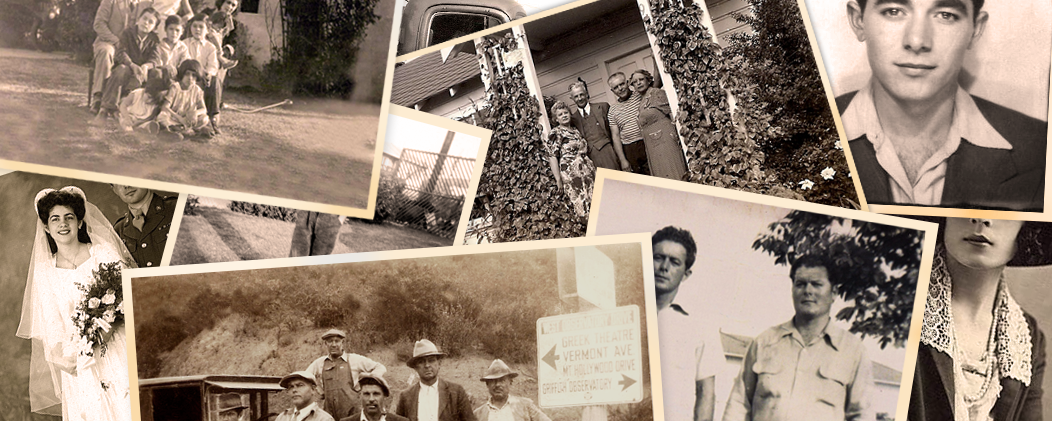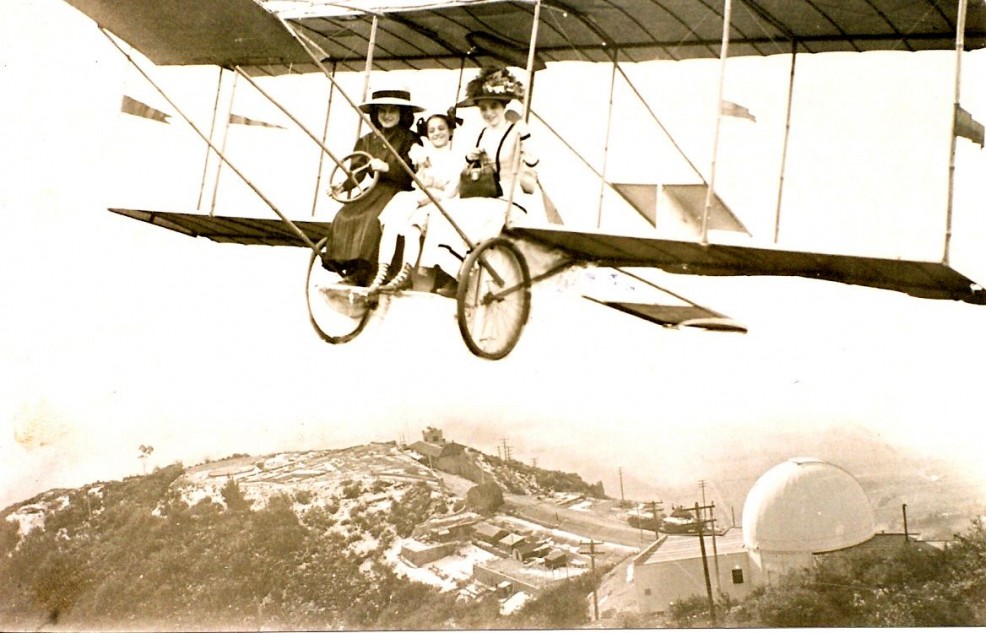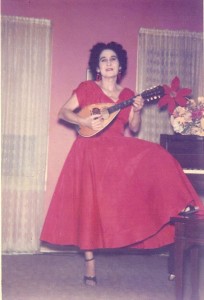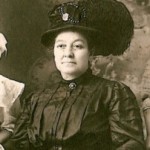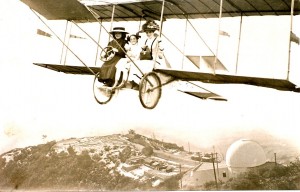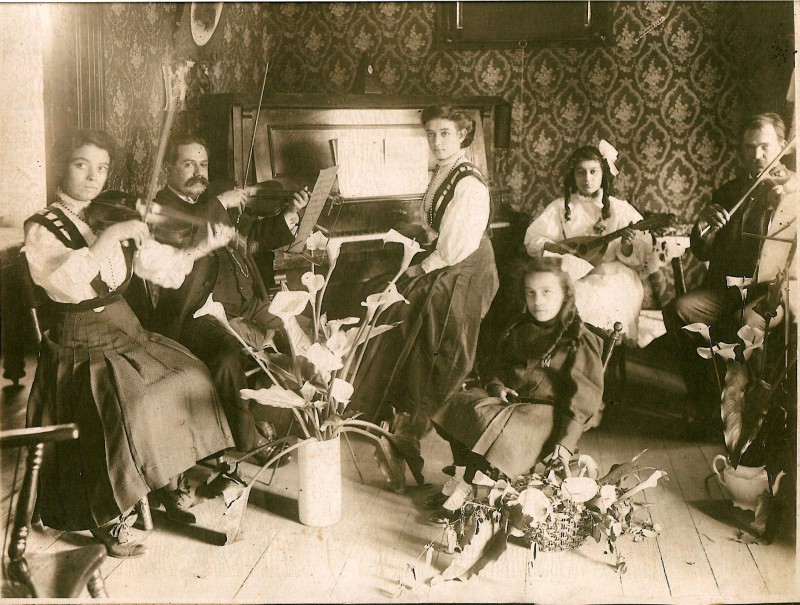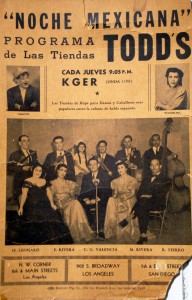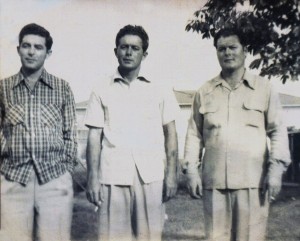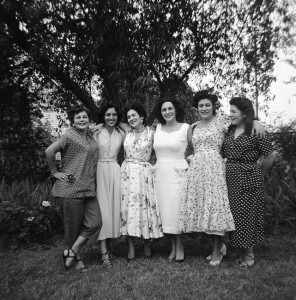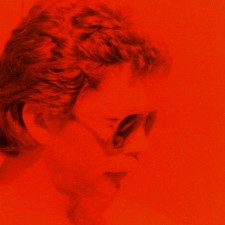Daniel the 3rd my Grandfather, the only son of Daniel and Aurelia was a veteran of World War I, although it is not known whether he saw any action. His enlistment papers show that he may have been ineligible for combat due to medical issues including a scratch across his left eye. On October 11 1947 he died after falling off a railroad car at the Los Angeles yard where he worked as a machinist for the Union Pacific. He had initially refused to see a doctor but finally, after 14 hours at White Memorial hospital, he expired of a brain hemorrhage. His sister Mary, now on her second marriage as Mary Straight and living in Culver City, signed the death certificate. He was buried at Calvary Cemetery on Whittier Boulevard in East Los Angeles on October 15th. His life of only 52 years was brief but he consumed life in great gulps like his father did.
He’d married Herminia Caballero, a pianist who was well known in large venues of the Los Angeles area in 1919. Herminia regularly played on radio and with large orchestras. She was so well read that many times she would perform with no rehearsal on her part.
Her father Basilio Caballero and mother Marianna Andrade immigrated from Mexico around 1899. Basilio was a tireless business man who’d came from Oquitoa in Sonora, founded in 1689 by the Jesuit missionary Eusebio Kino. Oquitoa was ten miles northeast of the Altar presidio. It was originally a Rancheria with a nearby silver mine at the confluence of the Altar and Magdalena rivers. The earliest records I have show his father, Basilio (senior) Caballero also born in Oquitoa in 1823. Marianna Andrade was born in Pitequito, Sonora, Mexico on July 26th 1866, about 14 miles west of Altar. She was the daughter of Frederico Andrade and Paz Ortiz. She and Basilio married on July 26th 1892. Their three oldest daughter’s records say that they were born in Altar. The three towns were just a few miles apart from each other and were some of the oldest northernmost outposts in Mexico. Altar was founded in 1775 by Captain Bernardo de Urrea as a military fort. It was used mainly as a presidio and staging point for Spanish exploration into California. It was at one time by a regulation adopted by the king to be the starting point for the construction of fifteen fixed posts, located at one hundred mile intervals, to run roughly along the 30th parallel all the way to La Bahia in Texas marking the approximate future of the U.S.-Mexican border.
The Caballeros were at the edge of the frontier and constantly on the lookout for trouble with the Apache. Early ranchers and farmers who lived on the outskirts of the fort paid no taxes but neither did they derive benefits from a town government or parish church. As condition of owning land within a five-mile radius of the presidio, settlers were obliged to take up their own arms and mounts to campaign against Apaches. Our families were there during the Indian uprising in which many Spanish settlers were killed. This may have been their motivation to finally immigrate to the U.S.
In 1898 they moved to Los Angeles. They lived in a large house at 1021 Alhambra Street, where Union Train Station now stands in the area known as Mexican Town. During these and subsequent years up until 1910, Basilio had been in many businesses starting with the occupation of brick layer, grocer, restaurant owner and tamale maker. He also worked for the Southern Pacific railroad. Many of the Caballero’s relatives settled in Tucson Arizona. The Caballero’s took occasional trips to Tucson to visit as their many photos of family reunions attest too. Basilio made sure all the children played instruments. He took lessons as a small child in Mexico and played the guitar. His father Basilio senior, known to be quite talented also played guitar and sang. Musical instruction was the mark of affluent families and Basilio, it was said, had made 25,000 dollars before leaving Mexico when he sold his patent for a motorized machine for grinding corn. He hoped that the girl’s education would help them land the proper husbands. His daughter Luisa would tell the story of the big hacienda they used to live in when they lived in Mexico. She claimed that it was formerly the residence of the Emperor Maximilian when the French ruled the country.
They were proud of their pure Spanish ancestry and their ethnic identity defined them.
Another story that may sound slightly more credible was that Alvarado Obregon was a rich chickpea farmer from Distrito Altar and knew our family. It is said that he wanted to marry either Carmela or Herminia. The fact that makes this story credible is that Obregon went back home after retiring from his time as president in 1924. It is known that the Caballeros went back to visit and if they were there in 1924, Carmela would have been 31 and already divorced, Luisa was 29 and my Grandmother Herminia would have been 26. Obregon was 44.
Together Basilio and Marianna had five children. Four of them girls. Of the three eldest girls, Carmela played the piano while Luisa played the violin and Herminia played both piano and mandolin. It is unsure if Helen, or Belen as she was called, being the youngest, played any instrument at all.
In 1908 they lived on Alhambra Street, a few blocks from La Placita Church and across the street from Calle Olvera which was “Mexican Town”. They did not live there very long. The property was taken over by the city and it is now the site of the Union Train Station. While Olvera Street still exists as a historic tourist site. There is a photo from that date which shows a large group living in a grand house for the area, dressed like middle or upper class Americans or Europeans.
While Herminia, the third child, was the star of the family, Luisa the second eldest was also an accomplished seamstress and would forever be the caregiver of the family e always providing extra money where most needed even to the point of giving her tiny house on Rosemead Boulevard which was just down the road from Rancho Don Daniel, my Grandfather’s leased land along the Hondo river to her nephew Robert and his growing family. She was also the conveyor of stories involving their history in Mexico and the journey to the U.S. Her home in Los Angeles had been ravaged by a fire that destroyed many of her cherished photos and documents. She never married. Carmela, the eldest daughter was married in Los Angeles on August 22nd 1913. She and her husband David Fernandez had four children, all girls. The Caballero girls did have a brother Manuel, who had married and moved away after Herminia’s marriage to Daniel 3rd. The family lost contact with them after that. Sadly, Belen, the youngest daughter died in Los Angeles on August 30th 1939 of tuberculosis at the age of 40.
Hispanic males who commonly defined their masculinity by the sexual conquest of women, made a virtue of adultery and Basilio was definitely of that persuasion. It was eventually discovered that Basilio also had another wife and family in Tijuana Mexico. The woman was Angelina Andrade. And it was his wife Marianna’s own sister. He had two children with her. Basilio and Angelina. It was there in Tijuana that he died in 1927. Marianna died in 1940 in Los Angeles.
Daniel Leonard’s (the 3rd) sister Alice was first friends with Herminia and introduced them. Her mother Marianna did not want Herminia to get close to Daniel. She initially disliked and distrusted him. In a letter from Luis Celaya a cousin through Carmela’s daughter Lillian, he says “I just remembered what Marianna used to say about your Grandfather Daniel Leonard, whom she did not care for. ‘Ahi viene Daniel, con su arête.’ ‘Here comes Daniel with his ear ring.’ Seems like an archaic saying. Can’t find any common usage. Dan Leonard used to come over to their house with his friends/pals. Marianna did not like that. Bad influence? Could mean hangers on, pals, guys who follow him around, guys who are always with him.” Daniel and Herminia had quite a tumultuous marriage. At first they were buddies. And Daniel who would sometimes play the drums for her, built a stage for Herminia and the kids to perform. Everyone had to sing or dance or play an instrument. Daniel ruled the children with an iron hand. He would let out a shrill whistle heard throughout the neighborhood and when he whistled the kids had better come running as fast as possible. They used to complain that they couldn’t really love him because they were so afraid of him. Children in those days were “seen but not heard”.
When he bought the house in Pico in 1940 (now Pico Rivera)it was only three years old. He leased property from the government along the Rio Hondo river and built the stage and a Hot Dog stand off San Gabriel Boulevard. Purchased in May 1943 and previously called Rancho Sonorense, he renamed it Rancho Alegre but it somehow came to be known by everyone as Rancho Don Daniel. An email from an older gentleman remembers:
In traveling back and forth along San Gabriel Blvd near Rosemead,
I’ve often pointed to where El Rancho Don Daniel used to be.
A small secluded wooded area along the Rio Hondo River.
I often wanted to stop and look for it but never did.
It was a place, as I remember, a small unique shaded picnic area where the parts of the river level was no more than 3 or 4 feet deep.
It had, what I would call a pleasant summer camp atmosphere.
I remember going there 80 or 82 years ago with my Grandmother To a Christian Baptismal which took place at that time.
I think it was My Grandmother who was dunked in the water.
In 1943 the Leonard’s had a big fight. It was vocal and it was physical and even the youngest daughter Patricia got involved. There was probably infidelity on both sides. They had been separated for some time and by now he had been seeing someone. Herminia seemingly a bit promiscuous herself spent much time away from the family with her music career. She was living in the house on Durfee Avenue alone with the children. In the end, Daniel in disgust gave the keys to the house to his son, Daniel Jr. (the 4th) my father, who then gave the keys to his mother Herminia.
Robert the youngest and Carl the oldest of the boys were wild and out of control. They would go out on a Friday or Saturday night to a club or bar for the sole purpose of instigating a fight. Many times their brother Daniel had to intervene in order to avoid an eventual arrest by the local police. My aunt Lucy who was also a rough and tumble kind of Character would often go out with then on their tirades sometime playing the instigator.
But many memories echo the sound of the parties held in the backyard patio under the grove of avocado trees at the old house on Durfee. With Johnnie and Joe, two of Herminia’s musical buddies playing guitar and violin under the lights. Here the happy-go-lucky Leonard’s would gather for birthdays, weddings and holidays with everyone dancing and drinking and having the best of times. And when someone died or was sick there would be prayer meetings held in a dimly lit and crowded back room full of kneeling adults. Where nothing but Hail Mary’s and Our Father’s could be heard being repeated in hushed unison.
In Minnie’s last years, we would sit around the piano and watch her play in her flamboyant 1920’s style, despite the pain in her crippled and arthritic hands which grew increasingly worse as the years went by. When we asked her to play a little something, she would feign embarrassment and wave us away, saying that she could not play so well anymore. Eventually we would get her to play something. You could see she was in her element. She swooned with the melody, adding flair and frill at the end of each passage.
On October 29th 1973 at 4:37 pm, Herminia died of cardiovascular collapse and acute bronchitis. She was 75 years of age, a grandmother and great grandmother many times over.
2014: Today, the estimated value of my Grandfathers property on Durfee Road is in the neighborhood of just under 400,000 dollars. The tiny houses along Gallatin Road which connect Durfee with Rosemead Blvd and where both Aunt Gloria and Aunt Lucy along with their families lived at one time are being demolished and the properties being cleared. New neighborhoods have been created and Mini mansions are being built across the street. The house on Durfee has been in the family for 74 years. It is the last of the large properties and in contrast; the lots on either side of it have long been upgraded into attractive homes with backyard pools and manicured lawns and gardens. The property formerly known as Streamland Park across the street has been erased and few people currently living in the area here know that a thriving amusement park with its permanent Carnival, rides, a midget tent, a fishing pond and dances on Saturday nights ever existed here. And where crowds of families gathered to picnic on weekends in the 1940’s and 50’s. And where at one time in the mix was Rancho Don Daniel; the focal point for the wild Leonard clan.
Thanks to: Patsy Leonard, Luis Celaya, Camille Garcia, Marie Leonard, Michele Leonard, Gary Leonard, Sharon (Checos) Davis, Carl Checos Santa Cruz, Nancy Santa Cruz, Monica Jaramillo, Anna Weaver, Linda Brown, Phoenix Pioneer Cemetery, Tazewell County Historical Society, and special thanks to my Dad, Daniel the 4th, who started it all.

